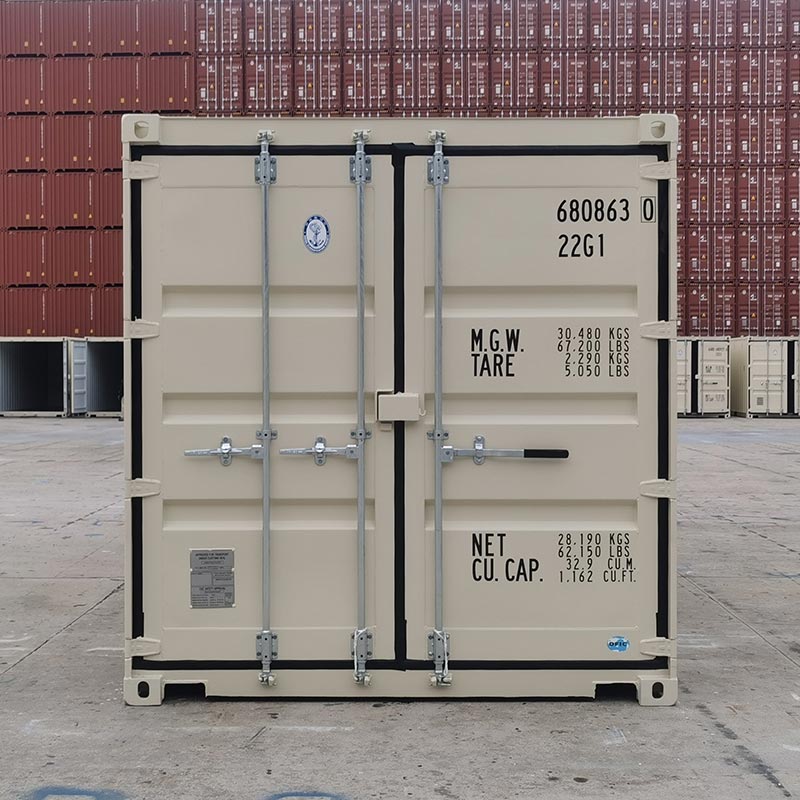What Are the Key Features That Define a Standard Shipping Container?
2025-07-09
In global trade and logistics, standard shipping containers are the backbone of cargo transport. From seaports to rail yards and warehouses, these robust, uniform containers are everywhere. But what exactly makes a shipping container “standard”? What features allow them to carry everything from machinery and electronics to clothing and food across continents with efficiency and reliability?
Let’s explore the key features that define a standard shipping container and why they’re so crucial in today’s supply chain.
1. Uniform Dimensions and Sizes
Standard shipping containers come in a few universally accepted sizes, most commonly 20-foot and 40-foot lengths. These dimensions follow the ISO (International Organization for Standardization) standards, which ensure global compatibility across transportation modes—ships, trucks, and trains.
20ft container (TEU – Twenty-foot Equivalent Unit): Typically measures 20 feet long, 8 feet wide, and 8.5 feet high.
40ft container (FEU – Forty-foot Equivalent Unit): Measures 40 feet in length with the same width and height.
These standard sizes make it easy to stack containers efficiently on cargo ships and streamline handling at ports and terminals.

2. Durable Steel Construction
Standard containers are built to endure harsh environments. They’re made primarily from weathering steel (commonly known as Corten steel), which is designed to resist corrosion from exposure to saltwater, rain, sun, and wind. The strong steel frame and panels help protect cargo during long journeys by sea, rail, or road.
3. Secure and Lockable Doors
A defining feature of standard containers is their double doors located at one end. These doors are equipped with heavy-duty locking mechanisms, including steel locking rods and rubber seals to keep the contents secure and weather-tight.
For international shipments, these locking mechanisms can also be sealed with tamper-evident tags or customs locks, offering peace of mind to shippers and recipients alike.
4. Stackability and Intermodal Compatibility
One of the major advantages of standard containers is their ability to be stacked—up to 9 high—on container ships. Corner castings on each container are designed to align perfectly with others, allowing for secure and space-efficient stacking.
They’re also fully intermodal, meaning they can transfer seamlessly between ships, trucks, and trains without unloading the cargo inside. This compatibility reduces handling time, lowers the risk of damage, and improves overall transport efficiency.
5. Weather and Pest Resistance
Standard containers are designed to be weatherproof. Rubber gaskets along the door frames create a tight seal that prevents water, dust, and pests from entering. Ventilation slots, typically found near the top of the container, help prevent moisture buildup and reduce the risk of mold or corrosion inside the container.
6. Floor and Interior Design
The floor of a standard shipping container is usually made of durable marine-grade plywood, supported by steel cross-members underneath. This provides a strong, stable base for heavy loads. The interior is designed to be simple and clean, with minimal obstructions, making it easy to load and unload goods using forklifts or manual labor.
7. Identification and Tracking Markings
Each container carries a unique identification number, often starting with a four-letter owner code followed by a six-digit serial number. These markings are essential for tracking cargo throughout its journey and are often used with GPS and container management systems for real-time location updates.
A standard shipping container is much more than a simple metal box. It’s a precisely engineered, globally recognized tool that supports the movement of goods across the world. From its robust construction and standardized sizing to its security features and intermodal flexibility, every element is designed to enhance efficiency and reliability in global logistics. Whether you're a shipper, freight forwarder, or logistics planner, understanding these key features can help you make informed decisions and streamline your operations.


